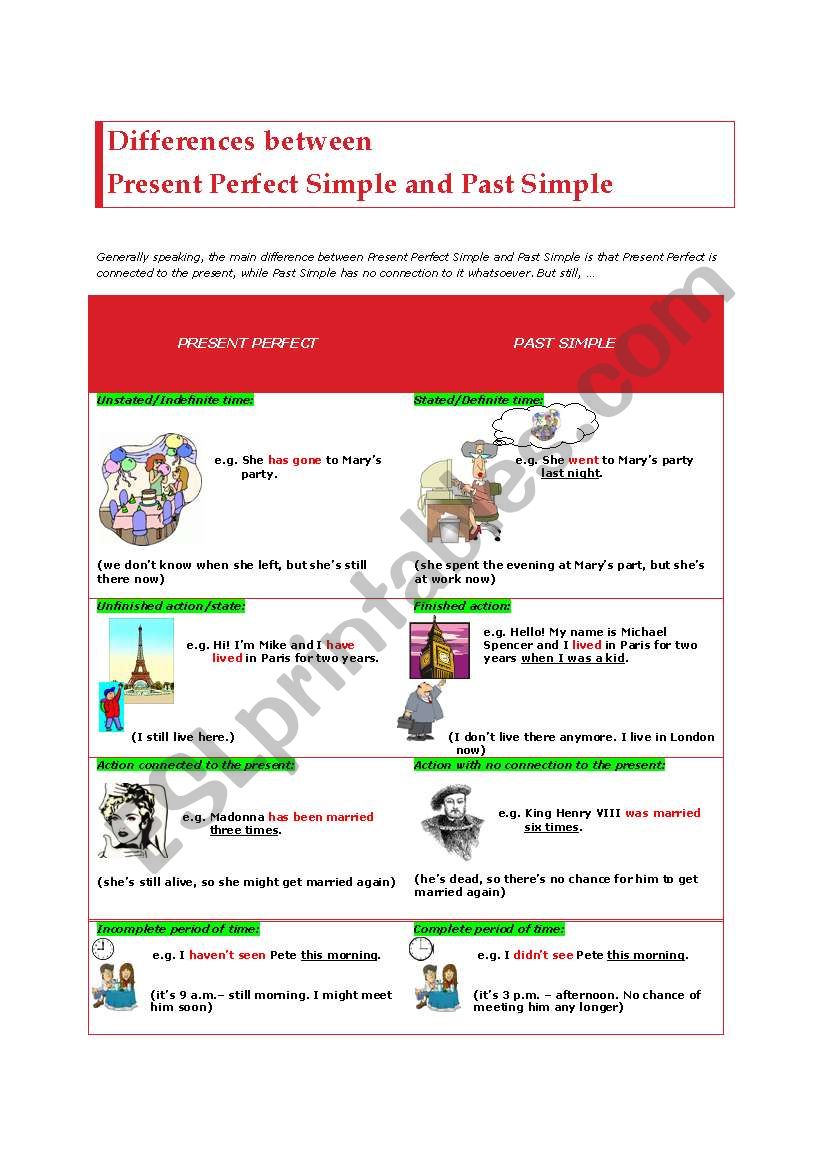
Past Perfect Vs Present Simple arbol
Simple past vs. present perfect The simple past and the present perfect both refer to past actions, but are not interchangeable in English grammar. The simple past is used with a specific time marker for actions that started and finished in the past.

Using The Present Perfect Tense in English ESLBUZZ
In British English, we use the present perfect to talk about an action or situation in the past when we don't know the exact time or it isn't important. I've invited Dave and Sue for dinner. We use the past simple to talk about a specific time in the past. I phoned my brother yesterday.
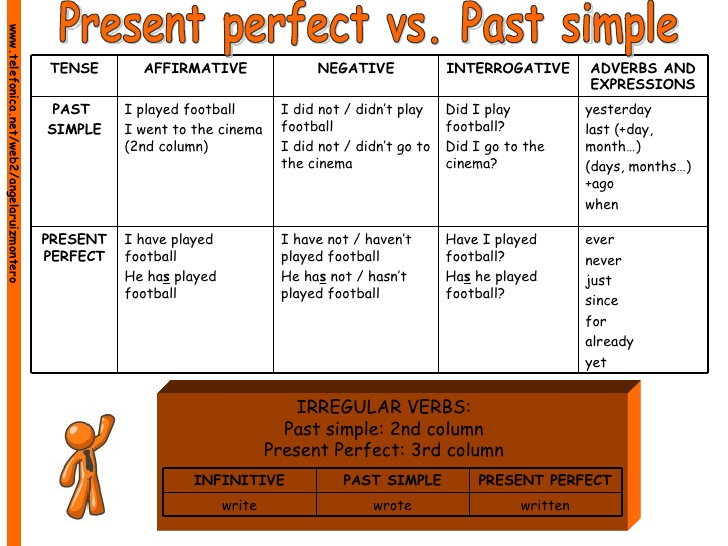
Past Perfect Vs Present Simple arbol
Past simple = I worked Present perfect = I have worked Definite time in the past We use the past simple to refer to definite time in the past (when we specify the time or how long) and usually with past time expressions such as yesterday, two weeks ago, last year, in 1995: We met in January 1975. We went to America together in 1978.

Past simplepresentperfect
Past Simple or Present Perfect 1 Past Simple or Present Perfect Exercise 1 Perfect English Grammar Past Simple or Present Perfect Exercise 1 Choose the past simple or the present perfect. Click here to review how to make the past simple. Click here to review how to make the present perfect.
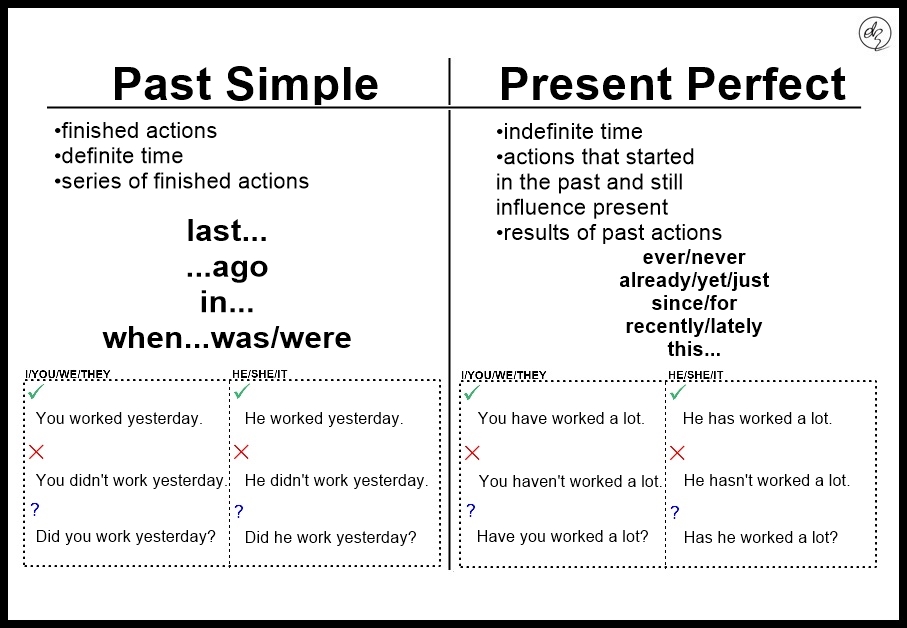
PAST SIMPLE vs. PRESENT PERFECT
Here are the basic differences between these two tenses: Time Specificity: The past simple is time-specific, while the present perfect is not. Relevance to Present: Present perfect actions are usually relevant to or affect the present; past simple actions do not. Time Markers: Past simple often uses specific time markers, while present perfect.
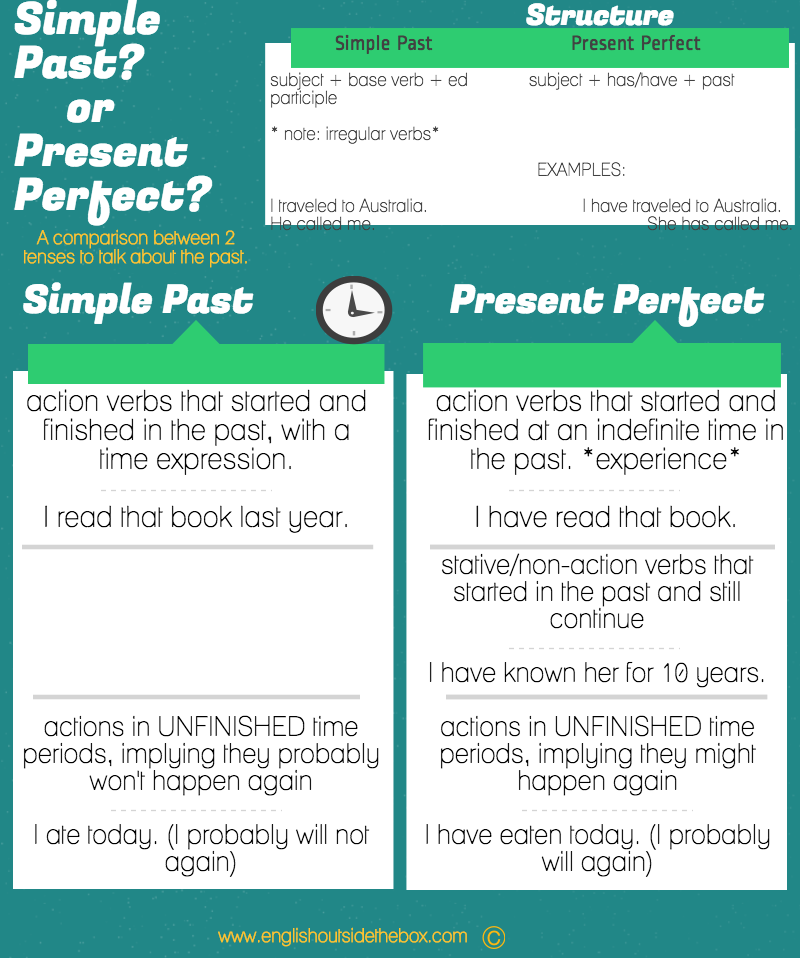
Simple Past vs Present Perfect vs Present Perfect Progressive English Outside The Box
We use the present perfect with how long, for, since to talk about actions or situations that started in the past and still continue or are still true now. We use the past simple with how long, for, since to talk about actions or situations that started and finished in the past. Compare:
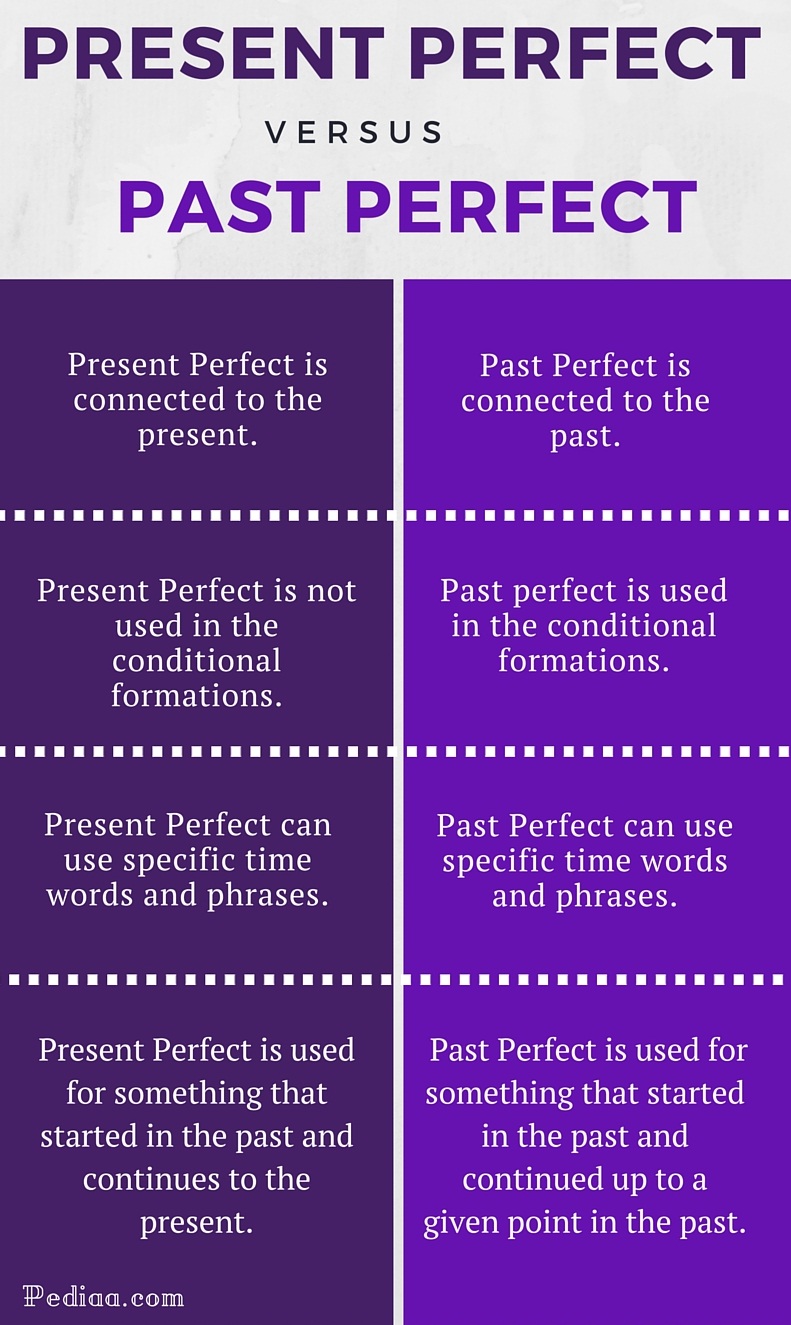
Difference Between Present Perfect and Past Perfect
The past simple is used to describe a completed action in the past, while the present perfect is used to describe an action that began in the past and continues up to the present moment. For example, "I saw a movie last night" (past simple) versus "I have seen that movie five times" (present perfect).

The Difference between Past Simple and Present Perfect 7 E S L
The simple past uses a single verb (the simple past form of the verb) while the present perfect uses two verbs (has/have + participle form of the verb). Here are some examples: The English Tenses: A Brief Introduction Tenses are a way of measuring time. They tell us whether a particular action has already happened, is happening or will happen.

Past Or Present Perfect EDUCA
past simple | present perfect | English tenses - Let's learn and compare the differences. Hi Everyone, In today's video, I teach you how to use the past simp.

Pin on Изучаем английский язык Study English
Present perfect for an unfinished time period and unspecified time in the past. Past simple for finished time and specific time in the past. I hope I've made it crystal clear when to use present perfect vs. simple past. Thanks for putting it into practice by making your own example sentences! Now make sure to download the PDF and try the quiz.

Past Simple Present Perfect презентация онлайн
Hello aisyki, 1) Yes, that's fine. 2) The present perfect is fine here. You cannot use present perfect with a fixed time (e.g. yesterday, last Thursday, 3.00) but you can use it with since + a fixed past time (e.g. since yesterday, since last Thursday, since 3.00). This is because since means 'from this time to the present' and so creates an open time frame.
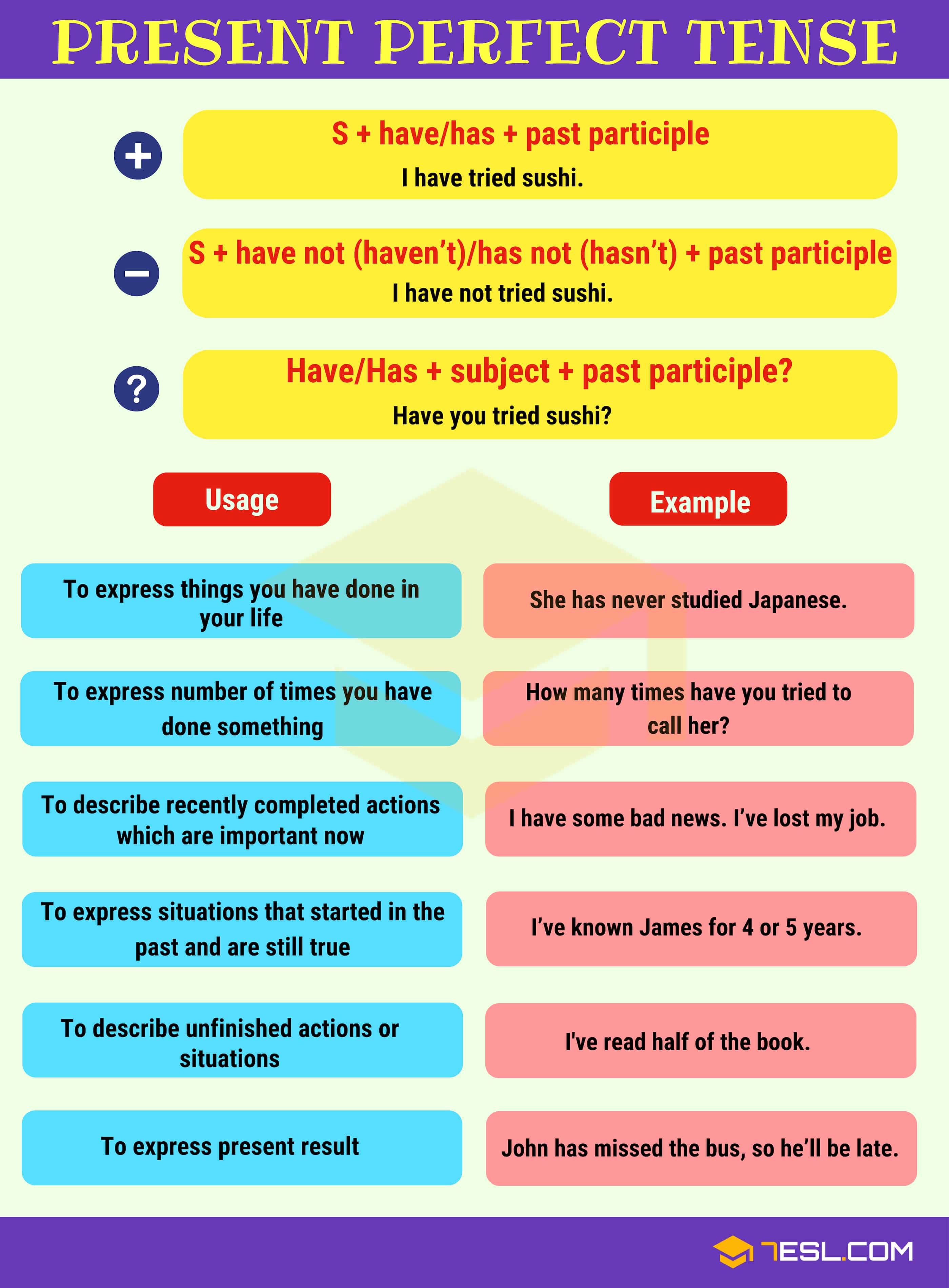
English is fun! Grammar 201819
Present Perfect or Past Simple? Perfect English Grammar What's the difference? Present Perfect and Past Simple Click here to download this explanation as a pdf Click here for more information about the present perfect tense Click here for more information about the past simple tense Remember:
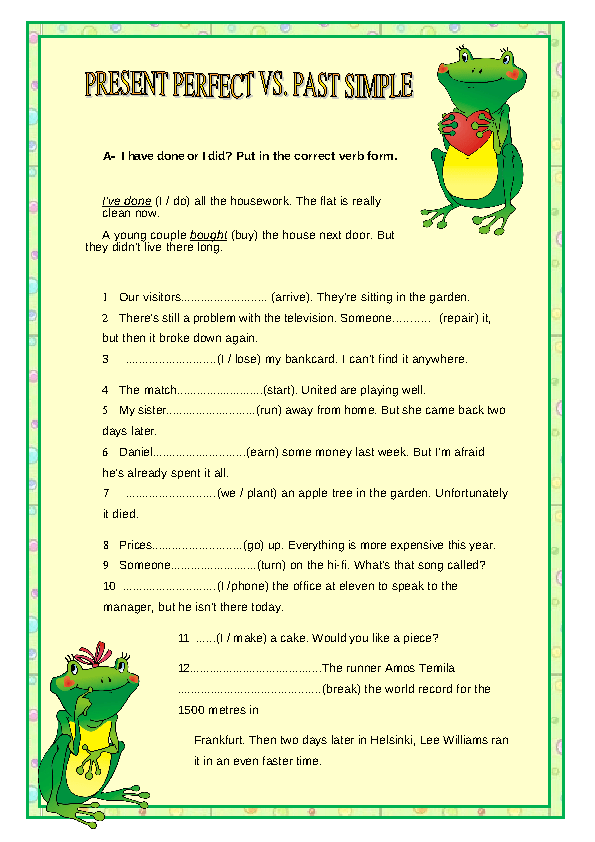
Present Perfect vs. Past Simple Worksheet
Today I'm going to explain two simple rules so that it will become clear to you! Not only will I give you example sentences, but I'll also ask you to make your own. That's the type of thing I do throughout the lessons in my Advanced English Grammar Course - I'm always helping you put it into practice and use the grammar yourself.

Difference Between Simple Past and Present Perfect
Mastering the Present Perfect Comparing Past Simple and Present Perfect Common Mistakes and How to Avoid Them Mistake #1: Using Present Perfect for Past Simple Actions Mistake #2: Using Past Simple for Present Perfect Actions Mistake #3: Forgetting the Time Expressions Mistake #4: Incorrect Use of Irregular Verbs
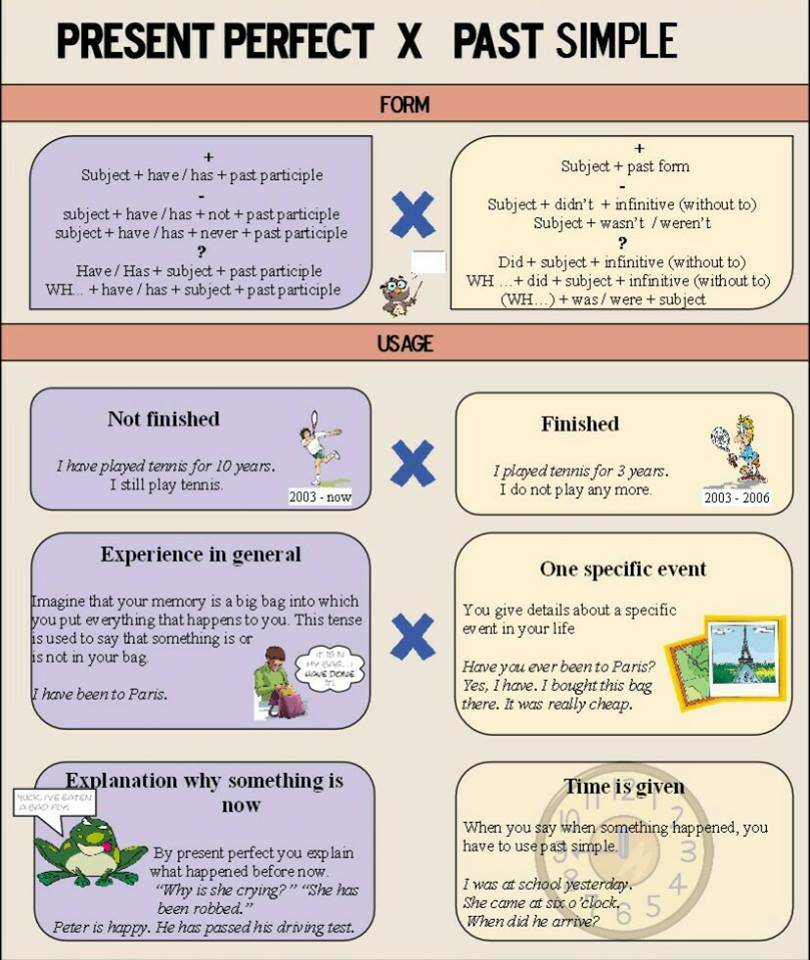
Present Perfect Tense vs Past Simple Tense English Learn Site
The present perfect is formed from the present tense of the verb have and the past participle of a verb. We use the present perfect: for something that started in the past and continues in the present: They've been married for nearly fifty years. She has lived in Liverpool all her life. when we are talking about our experience up to the present:

Differences Between Present Perfect Tense and Simple Past Tense English Study Page
Present perfect and past perfect. contrast: present perfect vs past simple. Complete the text with the past simple or present perfect simple form of the verbs in brackets. Use full forms ( I have ), not short forms ( I've ). Brighton is a city on the south coast of England. People (live) there for hundreds of years, although it (only / be) a.